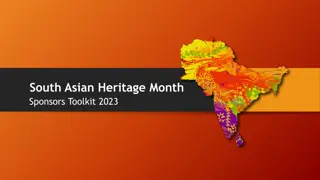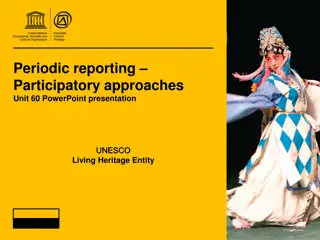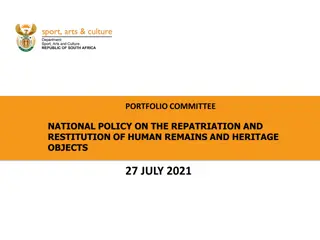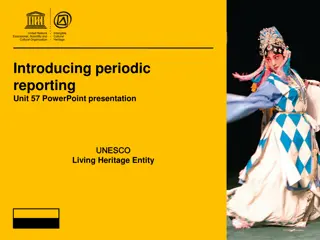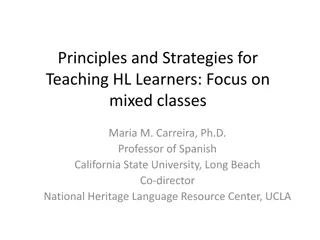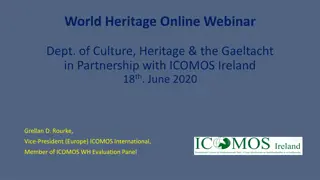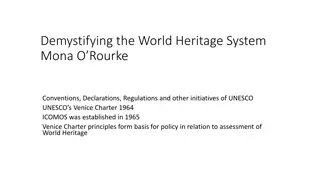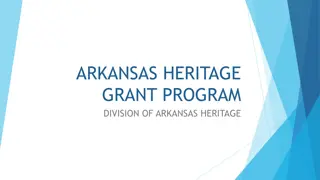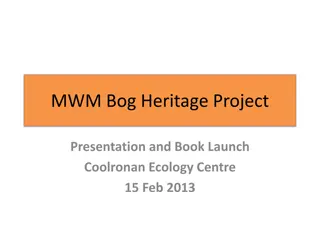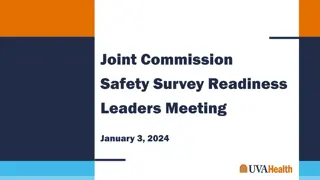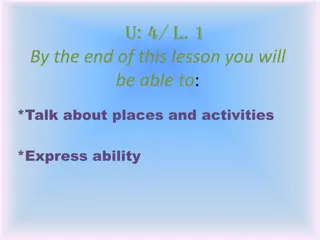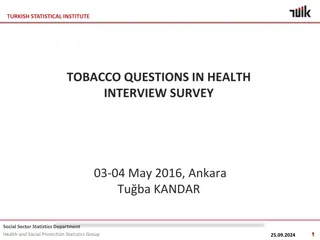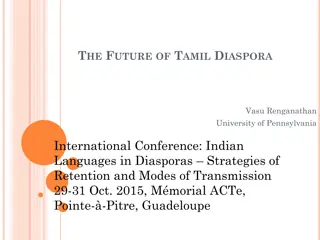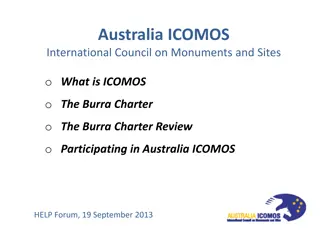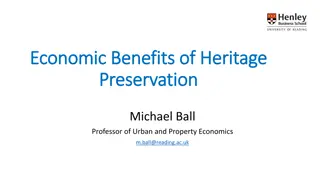Heritage Survey Techniques for Identifying Historical Places
A heritage survey is a systematic approach to identifying heritage sites within a defined area, including Aboriginal, historic, and archaeological places. It involves thematic surveys, engaging the community, and determining places of significance. The survey helps in heritage protection decision-making, strengthening community identity, and promoting tourism. Local government, state bodies, heritage professionals, and community groups are key participants in conducting heritage surveys by following methods like preparing, investigating, reporting, and implementing recommendations.
Uploaded on Oct 05, 2024 | 1 Views
Download Presentation

Please find below an Image/Link to download the presentation.
The content on the website is provided AS IS for your information and personal use only. It may not be sold, licensed, or shared on other websites without obtaining consent from the author.If you encounter any issues during the download, it is possible that the publisher has removed the file from their server.
You are allowed to download the files provided on this website for personal or commercial use, subject to the condition that they are used lawfully. All files are the property of their respective owners.
The content on the website is provided AS IS for your information and personal use only. It may not be sold, licensed, or shared on other websites without obtaining consent from the author.
E N D
Presentation Transcript
What is a heritage survey A technique for systematically identifying heritage places within a defined area o Aboriginal o Historic (themes and/or places) o Archaeological A survey may include: o Thematic survey of key historical periods o Identifying places of significance o Engaging the community
When, Why, Who Why? o To help make decisions about heritage protection, eg which places to enter into planning scheme Heritage Codes o To assist in strengthening community identity o To leverage tourism opportunities When? o Best carried out when reviewing planning schemes Who? o Local government (staff and elected officials) o State government bodies (Heritage Tasmania, Tasmanian Heritage Council) o Heritage property owners, historical societies, National Trust o Key industry, business and community groups o Heritage professionals
Method 1. Prepare o Establish project group o Develop project and communications plans o Clear aims and objectives o Clear roles and responsibilities o Timeframes o Secure additional resources o Consult Heritage Tasmania / Tasmanian Heritage Council o Available support o Information from the THR o Expertise and resources o In-house o In-kind assistance (libraries, historical groups) o Contract relevant expertise
Method (cont) Investigate o Historical themes - useful to organise framework o Invite community input o Detailed investigations, including site visits 2. Report 3. Written record of the historical themes Written record for each place Statement of significance Significance against criteria Photograph Recommendations o o o o o o
Implement Project group to review report and make recommendations o Managing o Listing o Community opportunities o Tourism opportunities
Overview Planning Scheme Heritage Codes Planning Provisions Registers Tasmanian Heritage Register Register of the National Estate National Trust lists Tasmanian Heritage Register Nominations to THR Advice Communications Grants Survey Report regional history define significant places & precincts define management options Define community opportunities Define tourism opportunities Other Documentary Info Previous surveys Community histories Research papers Community opportunities Community restoration projects Adaptive reuse of unused buildings for community use Community Values LGA discussions Community workshops Tourism opportunities Identify and market unique stories and attributes Develop interpretive trails Surveyed New Places new places identified thru research or field survey
Resources Assessing Historic Heritage Significance (HCH Act) http://www.heritage.tas.gov.au Burra Charter http://australia.icomos.org/publications/charters/




